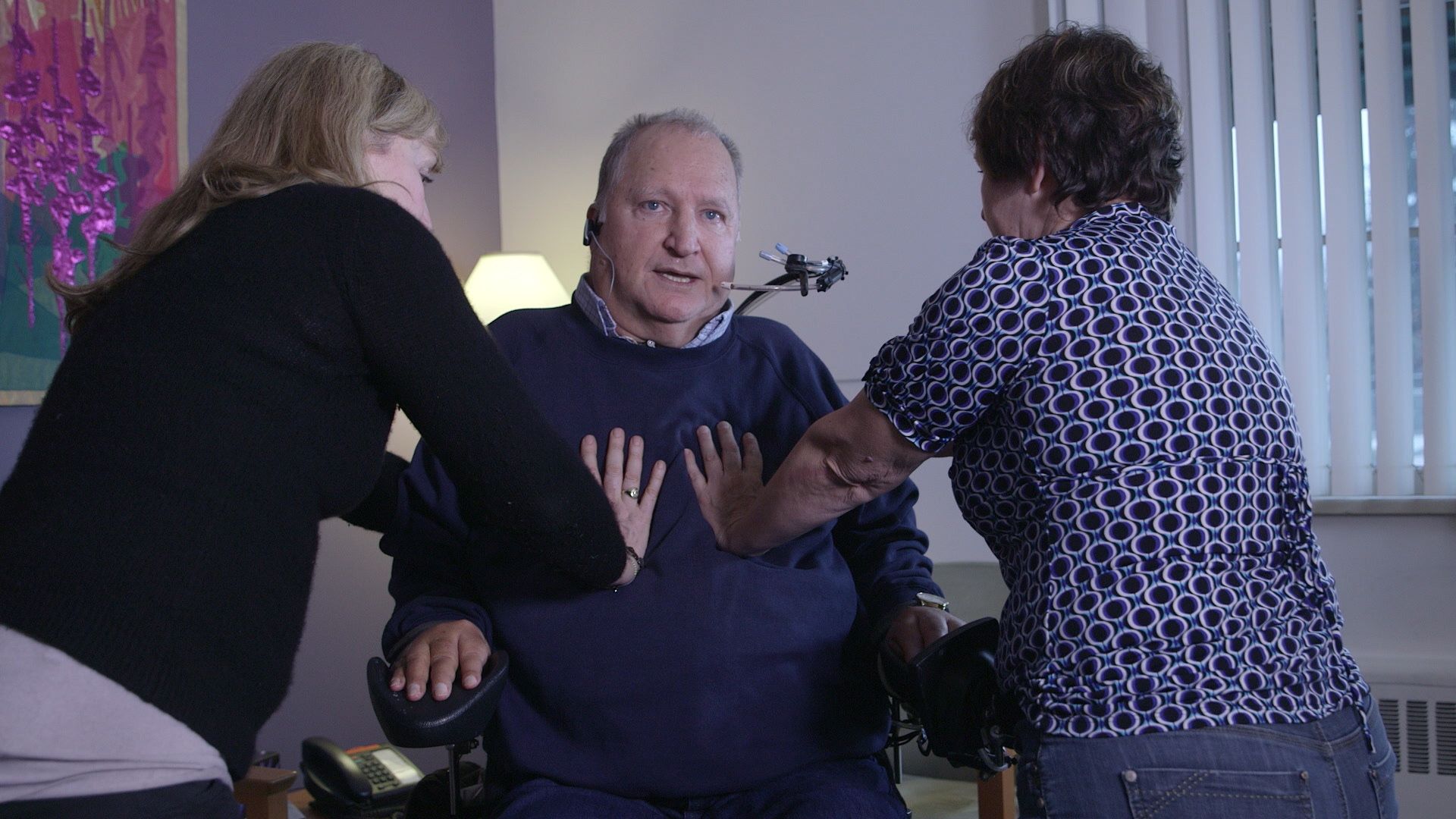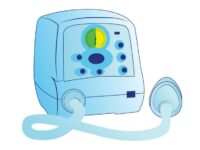Secretion Removal Techniques During Acute SCI
A major cause of pulmonary complications in patients with acute SCI results from an inability to clear bronchial secretions. In cervical spinal cord injuries, there is a predominance of parasympathetic drive that can lead to increased bronchial secretions. Concomitantly, nerves that innervate the diaphragm and abdominal muscles may be damaged, leading to impaired coughing ability, or a weaker less effective cough. The failure to perform deep coughing can cause pulmonary problems in two ways. First, patients can be in immediate pulmonary distress from choking or aspiration. Second, the retention of mucus, often for prolonged periods of time, can lead to respiratory infections such as bronchitis or pneumonia. For approximately 20% of people with acute tetraplegia, an excess of 1 L of mucous is produced each day (Bhaskar et al. 1991) which further demands the need for effective coughing techniques. The peak cough expiratory flow necessary to clear bronchial secretions is 3.1 L/s (Bach et al. 1993); people with SCI often test well below this threshold. Several mechanisms exist to improve coughing ability in patients with SCI. Manual assisted coughing, or “quad cough”, is an effective option whereby a caregiver applies firm and rapid pressure to the abdomen to force air out of the lungs. Mechanical assisted coughing, most commonly by mechanical insufflation-exsufflation, stimulates coughing by having a machine fill the lungs with air (insufflation) and then quickly reverse the flow to create negative pressure and push out secretions (exsufflation) (Volsko 2013). Additionally, positive expiratory pressure therapy systems are handheld devices used to create pressure in the lungs and facilitate clearance of secretions (Volsko 2013). If needed, more invasive procedures to remove secretions can be used, such as directly “deep” suctioning the trachea with a catheter or with bronchoscopy to remove mucous plugs.

Figure 4. Manual assisted coughing (“quad cough”)
 Mechanical insufflation-exsufflation (e.g., using a “Cough Assist machine”) is a therapy in which the device gradually inflates the lungs (insufflation), followed by an immediate and abrupt change to negative pressure, which produces a rapid exhalation (exsufflation), which simulates a cough, and helps to clear secretions.
Mechanical insufflation-exsufflation (e.g., using a “Cough Assist machine”) is a therapy in which the device gradually inflates the lungs (insufflation), followed by an immediate and abrupt change to negative pressure, which produces a rapid exhalation (exsufflation), which simulates a cough, and helps to clear secretions.
Discussion
A single RCT found that mechanical insufflation/exsufflation is more effective at restoring cough than manual techniques alone (Pillastrini et al. 2006). This study did not test the efficacy of removing secretions directly, but instead tested them indirectly by measuring coughing ability through measurements such as forced vital capacity, forced expiratory volume, and peak cough expiratory flow. These measures were significantly improved with the addition of mechanical insufflation/exsufflation, demonstrating that these devices can enhance cough in patients with acute SCI. A pre-post study by Garstang et al. (2000) surveyed the preference for suctioning or maximal in/exsufflation in 18 patients with SCI; the majority of patients (16/18) reportedly preferred maximal in/exsufflation.
Conclusion
There is level 2 evidence (from one RCT: Pillastrini et al. 2006) in support of mechanical insufflation/exsufflation as an effective adjunctive therapy to the use of respiratory kinesitherapy for bronchial clearance in patients with acute SCI.
There is level 4 evidence (from one pre-post study: Garstang et al. 2000) that patients with SCI prefer maximal in/exsufflation over suctioning.
Discussion
There is one RCT that showed that oscillated incentive spirometry (OIS) plus oscillated positive expiratory pressure (OPEP) breathing in a single-day intervention was more effective in the removal of secretions in intubated patients with cervical SCI for secretion clearance than OPEP and placebo interventions (Kluaythomthong et al. 2019).
A pre-post study of Torres-Castro et al. (2014) compared the application of different interventions to increase peak cough flow (PCF) in patients with complete tetraplegia. The authors reported that the combined technique of maximal expiratory effort while receiving assisted cough after air stacking with a manual resuscitation bag (AS-MEE-AC) provided the best values of PCF.
Conclusion
There is level 2 evidence (from one RCT: Kluaythomthong et al. 2019) that OPEP plus OIS intervention facilitates secretion removal in patients with acute SCI.
There is level 4 evidence (from one pre-post study: Torres-Castro et al. 2014) that the combined technique of maximal expiratory effort while receiving assisted cough after air stacking with a manual resuscitation bag (AS-MEE-AC) reaches near normal PCF values.
